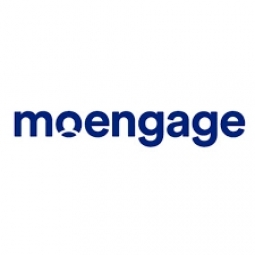技术
- 网络与连接 - 5G
- 平台即服务 (PaaS) - 应用开发平台
适用行业
- 电子商务
- 零售
用例
- 供应链可见性(SCV)
- 交通监控
关于客户
Future Pay 是一款基于应用程序的钱包产品,用于在 Future Group 商店中进行在线购物。该应用程序旨在为超过 2000 万客户提供轻松的在线购物体验。使用 Future Pay 应用程序,客户可以在超过 1500 家 Future Group 商店购物,包括 Big Bazaar、fbb、Ezone、HyperCity、Central、Easyday Club、Heritage Fresh、Foodhall、Nilgiris、Brand Factory 等。该应用程序还通过将忠诚卡(回报卡和利润俱乐部卡)链接到其应用程序来提供无现金和无卡交易,从而消除了客户携带这些卡的需要。
挑战
Future Group 的一款钱包应用程序 Future Pay 在跟踪用户与主屏幕上的促销横幅的互动方面面临着挑战。这些横幅将用户重定向到选定的品牌页面,是其营销策略的关键部分。然而,Future Pay 产品团队无法跟踪这些横幅的点击次数或衡量登陆这些品牌页面的用户的转化率。由于缺乏可见性,很难评估其营销工作的有效性并优化其参与策略。该团队希望了解用户行为以及这些横幅的流失情况,希望这能帮助他们提供更加个性化的参与度并提高流量和转化率。解决方案的标准是帮助团队了解用户行为以及这些横幅的流失情况。
解决方案
Future Pay 产品团队决定使用客户互动平台 MoEngage 来深入了解用户应用程序活动并执行全面的互动策略。该团队制定了一个三步策略:了解用户应用程序活动和折扣横幅的参与度,根据这些见解对用户进行细分,以及创建参与活动工作流程以优化用户对各种折扣和优惠的沟通。他们分析了用户操作,例如应用内搜索、点击推送通知以及点击特定横幅来绘制用户旅程。这些数据帮助他们了解用户偏好和横幅的性能。然后,该团队根据用户的应用活动、偏好和人口统计数据对用户进行细分,并针对这些细分开展了各种定制的参与活动。他们使用 MoEngage 基于人工智能的推荐引擎 Sherpa 来优化消息传递和发送时间。
运营影响
数量效益

Case Study missing?
Start adding your own!
Register with your work email and create a new case study profile for your business.
相关案例.

Case Study
Improving Production Line Efficiency with Ethernet Micro RTU Controller
Moxa was asked to provide a connectivity solution for one of the world's leading cosmetics companies. This multinational corporation, with retail presence in 130 countries, 23 global braches, and over 66,000 employees, sought to improve the efficiency of their production process by migrating from manual monitoring to an automatic productivity monitoring system. The production line was being monitored by ABB Real-TPI, a factory information system that offers data collection and analysis to improve plant efficiency. Due to software limitations, the customer needed an OPC server and a corresponding I/O solution to collect data from additional sensor devices for the Real-TPI system. The goal is to enable the factory information system to more thoroughly collect data from every corner of the production line. This will improve its ability to measure Overall Equipment Effectiveness (OEE) and translate into increased production efficiencies. System Requirements • Instant status updates while still consuming minimal bandwidth to relieve strain on limited factory networks • Interoperable with ABB Real-TPI • Small form factor appropriate for deployment where space is scarce • Remote software management and configuration to simplify operations

Case Study
Digital Retail Security Solutions
Sennco wanted to help its retail customers increase sales and profits by developing an innovative alarm system as opposed to conventional connected alarms that are permanently tethered to display products. These traditional security systems were cumbersome and intrusive to the customer shopping experience. Additionally, they provided no useful data or analytics.

Case Study
How Sirqul’s IoT Platform is Crafting Carrefour’s New In-Store Experiences
Carrefour Taiwan’s goal is to be completely digital by end of 2018. Out-dated manual methods for analysis and assumptions limited Carrefour’s ability to change the customer experience and were void of real-time decision-making capabilities. Rather than relying solely on sales data, assumptions, and disparate systems, Carrefour Taiwan’s CEO led an initiative to find a connected IoT solution that could give the team the ability to make real-time changes and more informed decisions. Prior to implementing, Carrefour struggled to address their conversion rates and did not have the proper insights into the customer decision-making process nor how to make an immediate impact without losing customer confidence.

Case Study
Ensures Cold Milk in Your Supermarket
As of 2014, AK-Centralen has over 1,500 Danish supermarkets equipped, and utilizes 16 operators, and is open 24 hours a day, 365 days a year. AK-Centralen needed the ability to monitor the cooling alarms from around the country, 24 hours a day, 365 days a year. Each and every time the door to a milk cooler or a freezer does not close properly, an alarm goes off on a computer screen in a control building in southwestern Odense. This type of alarm will go off approximately 140,000 times per year, equating to roughly 400 alarms in a 24-hour period. Should an alarm go off, then there is only a limited amount of time to act before dairy products or frozen pizza must be disposed of, and this type of waste can quickly start to cost a supermarket a great deal of money.

Case Study
Supermarket Energy Savings
The client had previously deployed a one-meter-per-store monitoring program. Given the manner in which energy consumption changes with external temperature, hour of the day, day of week and month of year, a single meter solution lacked the ability to detect the difference between a true problem and a changing store environment. Most importantly, a single meter solution could never identify root cause of energy consumption changes. This approach never reduced the number of truck-rolls or man-hours required to find and resolve issues.








